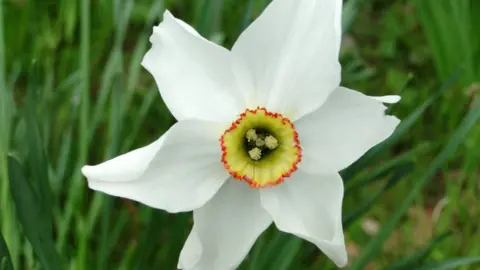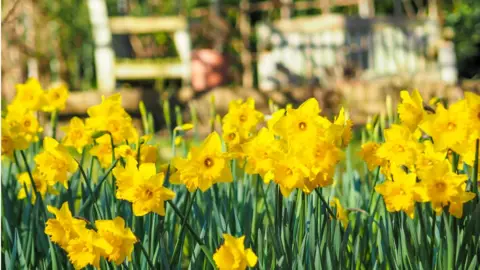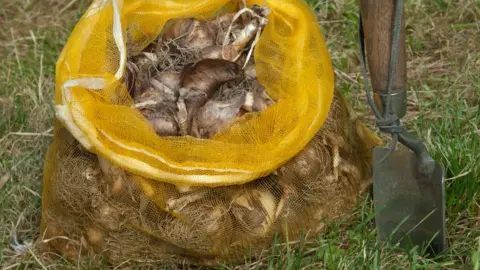Revealed: The secret of the poet's daffodil
 Rodney Lay/RHS
Rodney Lay/RHSThe secrets of a flower known as the poet's daffodil have fallen to science.
The genetic code of the daffodil's chloroplast - the DNA responsible for photosynthesis - has been mapped for the first time.
Narcissus poeticus was one of the first daffodils to be cultivated, and is linked to the Greek legend of Narcissus.
In Greek mythology, the flower that bears his name sprang up where he died.
Researchers from the Royal Horticultural Society (RHS) and the University of Reading deciphered the genetic code of the chloroplast - where the energy from the light of the Sun is turned into food by photosynthesis.
 Getty Images
Getty Images
Daffodils facts
- Daffodils have long been considered one of the heralds of spring.
- They can be planted in borders and containers.
- The Latin name of the plant family is Narcissus
- Some species hybridize in the wild, and many horticultural crosses between species have resulted in a large range of colourful garden hybrids.

The research could solve the problem of how to make sure daffodil bulbs planted in bulk come up the same colour.
There are more than 1,500 different varieties of daffodils, and their bulbs all look the same.
Gardeners are sometimes disappointed when the bulbs they have planted in autumn come up a different colour the next spring.
 RHS/Tim Sandall
RHS/Tim SandallJohn David, head of horticultural taxonomy at the RHS, said chloroplast DNA is a good way of finding a marker that is specific to a particular cultivar (a plant variety that has been produced in cultivation by selective breeding).
"This is an exciting first step in identifying daffodil varieties at the point they are most popularly bought but when there is nothing to tell them apart," he said.
"With so many bulbs due to be planted this autumn it is a huge industry and we hope our work might avoid disappointment for professionals who plant en masse and gardeners who will often seek out their tried and tested favourites."
The research is published in the journal, Mitochondrial DNA Part B.
